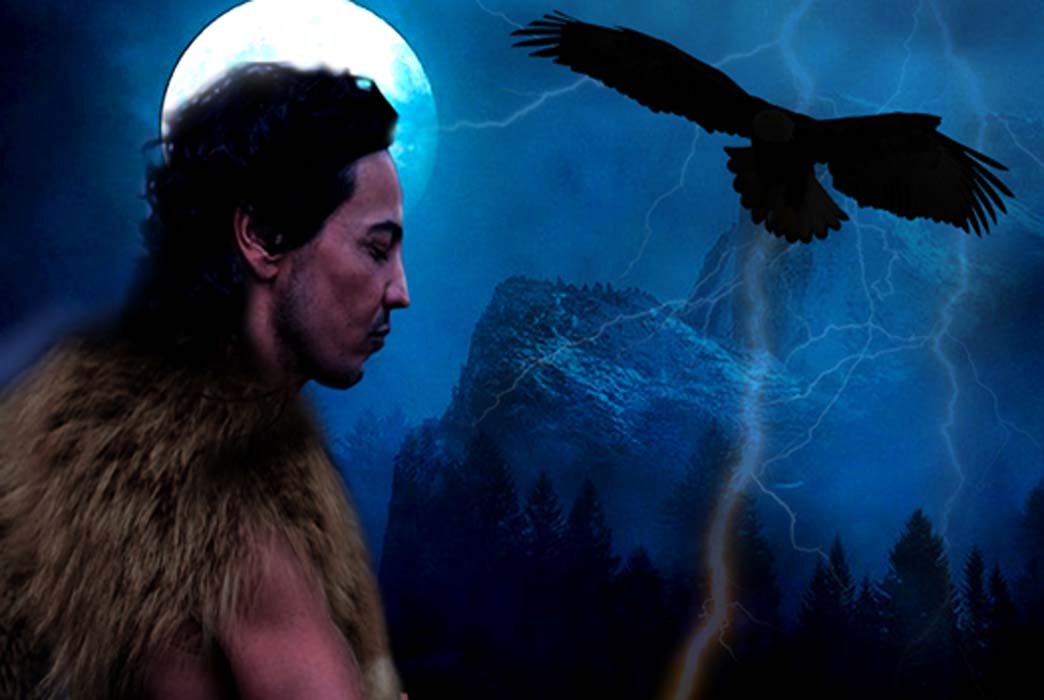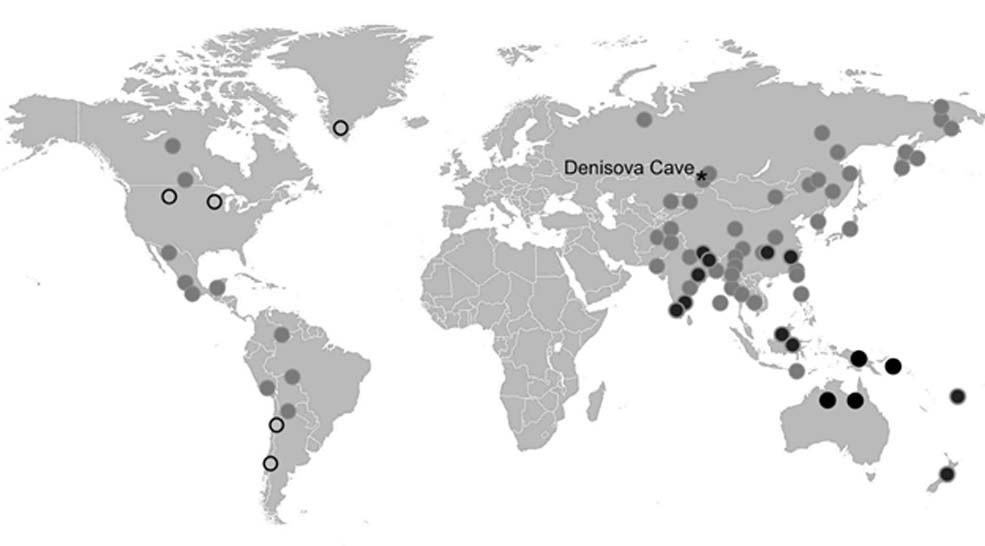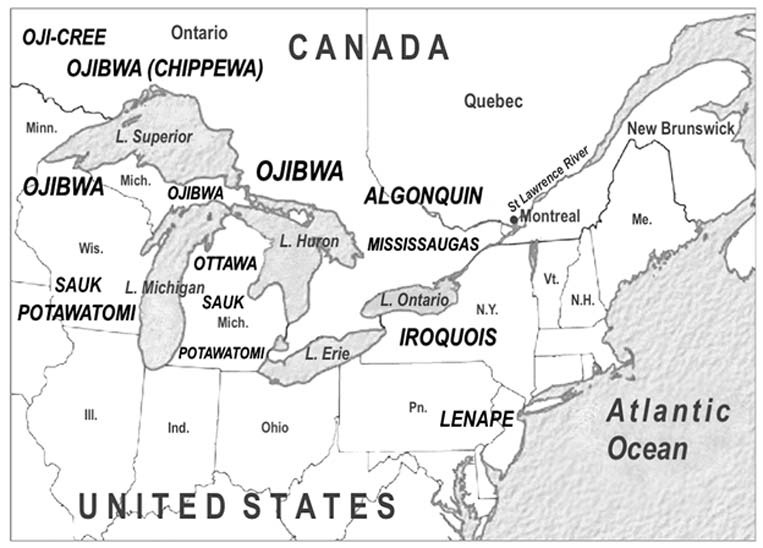
The Coming of the Thunder People: Denisovan Hybrids, Shamanism and the American Genesis
In 2010 the existence of a previously unknown archaic human population was revealed following the DNA sequencing of a finger bone over 41,000 years old. It was discovered in 2008 in the Denisova Cave, a Stone Age site located in the Altai Mountains of southern Siberia. Three molars, two of enormous size, were also retrieved. They too belong to this same group of archaic humans, who are today known as the Denisovans.

Map showing the distribution of Denisovan DNA in modern populations based on the Altaic Denisovan genome (after Sankararaman et al 2016). Black circles 3-5 %. Grey circles with black rings 2-3 %. Grey circles 1-2 &. Values are approximate only. Black rings indicate locations of more recent discoveries of Denisovan ancestry (Image: Courtesy of Author).
Although to date these remain the only confirmed fossils relating to this extinct population, the sequencing of the Denisovan genome by the Department of Human Evolution at the Max Planck Institute for Evolutionary Anthropology in Leipzig, Germany, determined that many modern-day human populations carry Denisovan ancestry. Most of these populations are located in central, southern and eastern Asia. Others are found among the indigenous peoples of Papua New Guinea, Australia and the Solomon Islands in the South Pacific.
What about the Americas? Did the Denisovans’ impact on the continent prior to the submergence of the Beringia land-bridge around 8500 BC, which for tens of thousands of years had provided safe passage between the Russian Far East and Alaska?
Denisovan DNA
Various First Peoples in both North and South America possess significant levels of Denisovan DNA. This includes the Ojibwa, one of the largest tribes in North America. Their territories extend from Ontario in Canada down through the Great Lakes region into Minnesota and Wisconsin. Originally, their homeland was far to the east in the St Lawrence River basin (current Quebec). The Cree (or Oji-Cree) also possess Denisovan DNA, although not quite to the same level as the Ojibwa. Their ancestral home was immediately to the north and west of the Ojibwa in Ontario, Manitoba, Saskatchewan, Alberta, and the Northwest Territories.
The Anishinaabeg
Both the Ojibwa and Cree form part of what is known as the Algonquian language-speaking group, named after the Algonquin or Algonkin tribe. This collective of First Nations refer to themselves as the Anishinaabe (plural Anishinaabeg), meaning, ‘original people’ with a shared language known as Anishinaabemowin. Those belonging to this interlinked network of tribes, located in the northern and north-eastern parts of the North American continent, include the Potawatomi, Mississaugas, Cree, Chippewa, Ottawa, Ojibwa, and the Algonquin. Despite the ethnic and cultural unity of the Anishinaabeg, it is only the Ojibwa and Cree that possess significant levels of Denisovan ancestry (other tribes that do have it include the eastern Algonquin, whose surviving territories are beyond the north-eastern limits of the Great Lakes region, as well as the Tlingit of the Pacific Northwest).

Map showing the territories of First Peoples of the Great Lakes and St Lawrence River region of the United States and Canada. (Image: Courtesy of the Author)
Asian Origins
The ancestors of the Algonquian-speaking peoples are thought to have entered North America from East Asia. A study of First American DNA, based on the genome sequencing, suggests that the earliest peoples to arrive in North America came from East Asia around 23,000 years ago. By 12,500 years ago the population had split into two distinct branches. One moved southward contributing to the emergence of the first indigenous populations to occupy southern North America, Central America, and South America. The other branch headed eastward, forming the ancestors of various First Peoples including the Algonquin, Chippewa, Ojibwa and Cree. How exactly did the Ojibwa and Cree then come to possess so much Denisovan DNA? One major clue comes from a most unlikely belief found among the various Anishinaabeg tribes. It relates to legends concerning the prior existence on the continent of a mythical population known as the Thunder People.




